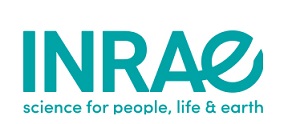The Phenoscope is a high-throughput phenotyping device to handle and monitor hundreds of individual pots, each containing a single plant. It is typically used to track vegetative growth under various environments on a large number of genotypes. The pots are rotated continuously (typical cycle of 4 hours) on a closed-circuit track consisting of a series of switchback turns that allow the 700+ plants to be exposed to very homogeneous conditions. Weighing / watering stations allow to monitor and adjust watering and nutrients at every cycle following precise scenarios defined by the user for each pot, while imaging stations are designed to acquire non-destructive phenotypes in the visible and IR range. The Phenoscope is specifically designed to handle small plants (Arabidopsis) during their vegetative phase ; we are setting up a new Phenoscope version ('XL') that would be able to handle small plants beyond flowering initiation. We have shown that the average gain enabled by the Phenoscope (in terms of reduction in the environmental heterogeneity or in the number of replicates needed) was about a factor 3.
These robots allow to perform experiments that would not be viable or reproducible by hand.

Phenoscopes are typically best exploited in quantitative genetics approaches (QTL, GWAS), mutant screens or any other large scale experiment that require the comparison of hundreds of individuals in different environments. They can also be useful for a detailed characterisation of a small number of specific lines (in comparison with other datasets present in our database, or combined to other omics profiling of the produced samples) and for the establishment of response curves against multiple gradual stress treatments.

These robots are only deployed at IJPB (INRAE Versailles) as part of the PO. They are placed in growth chambers with white LED lighting. Environmental settings are constrained and we strongly favor experiments in our standard conditions, i.e. short days (= 8h photoperiod) and standard temperature (21°C/18°C) and hygrometry (65%).

As a potential user, please find more details in the following Phenoscope Platform Agreement.
For more information (or citation purposes): Tisné et al., The Plant Journal, 2013
 |
 |
Contact us at ijpb-phenoscope[at]inrae.fr.
Please always contact us BEFORE submitting a project/grant that could make use of the Phenoscope or we may not be able to answer your needs!
We are supported by:
 |
 |
 |
 |
 |
 |
 |